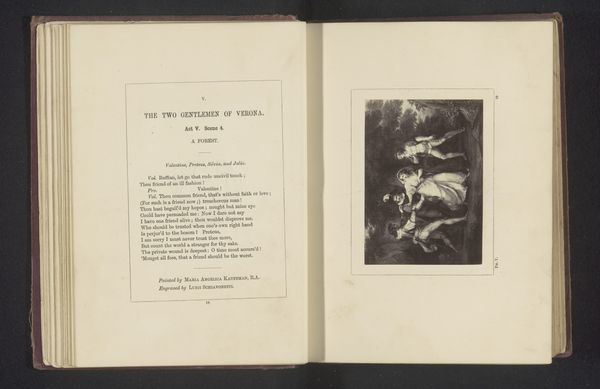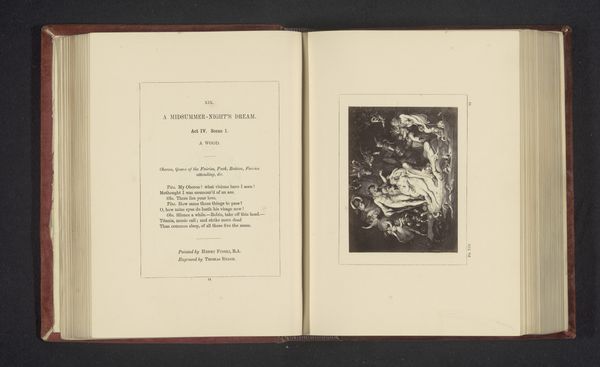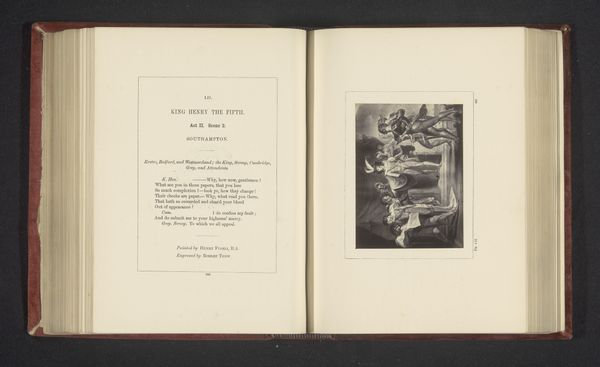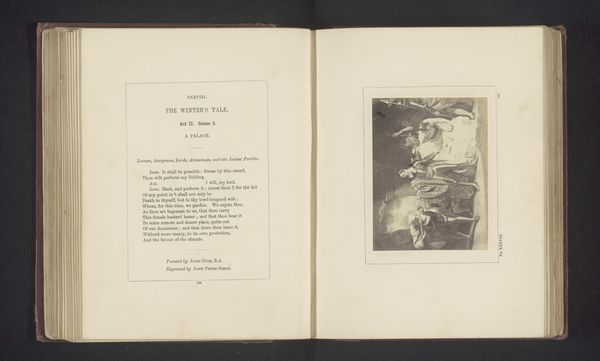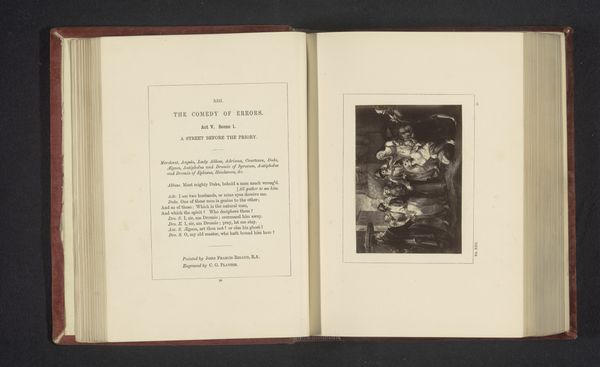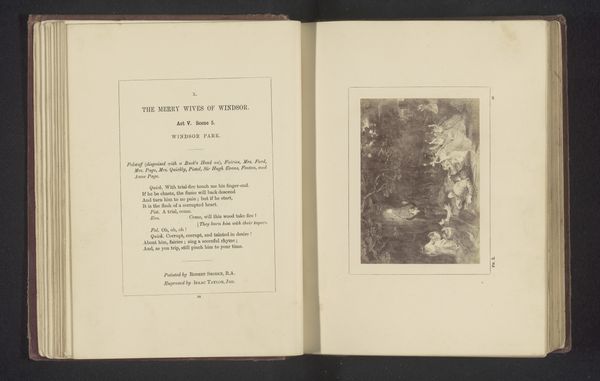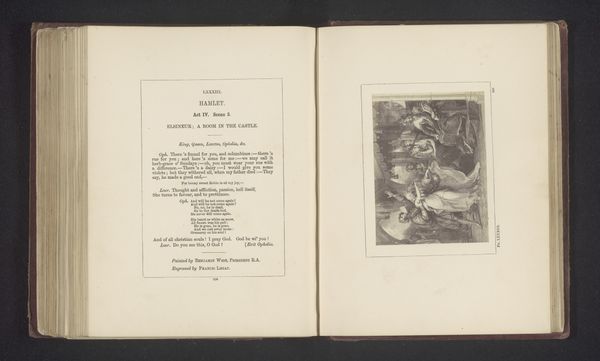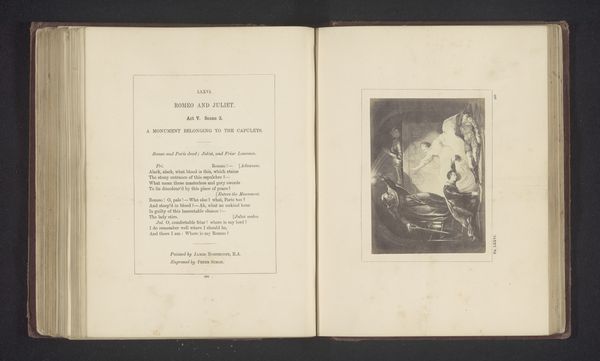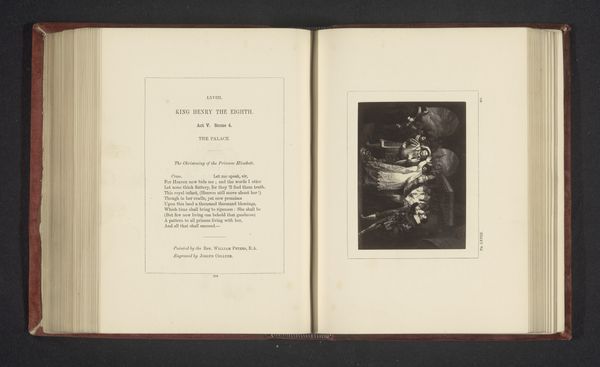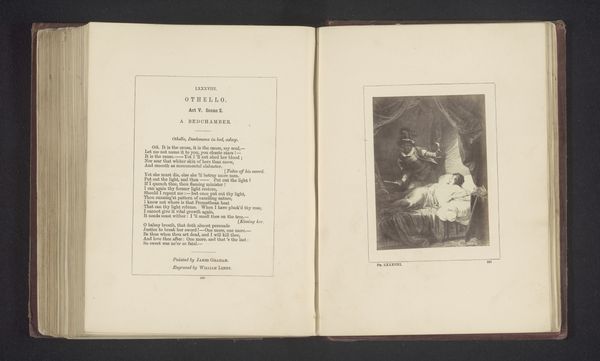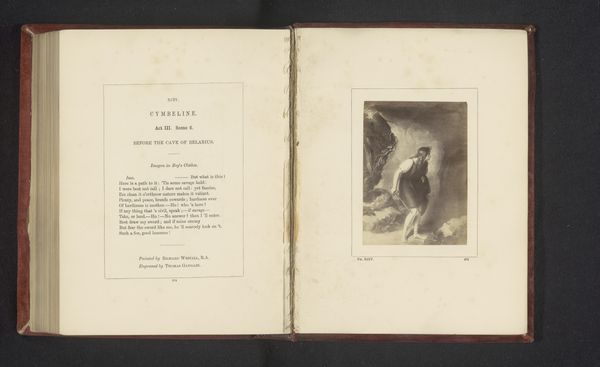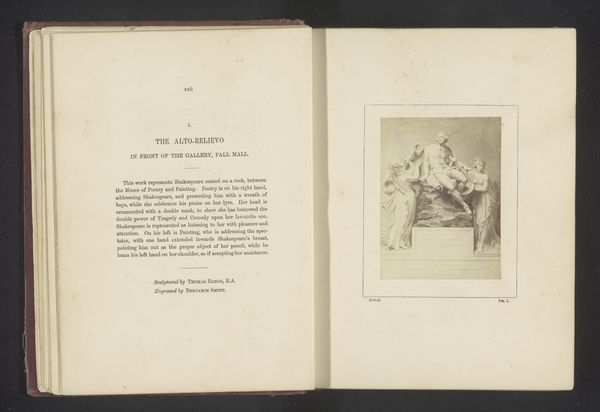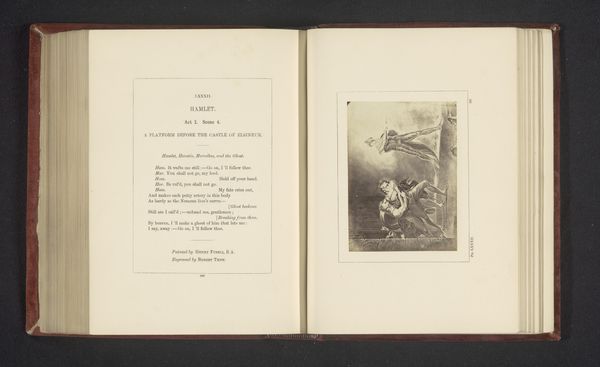
Fotoreproductie van een prent naar een schilderij door Johann Heinrich Füssli, voorstellend een scene uit De Storm door William Shakespeare before 1864
0:00
0:00
Dimensions: height 70 mm, width 98 mm
Copyright: Rijks Museum: Open Domain
Curator: I must say, this photogravure reproduction of a print adapted from Johann Heinrich Füssli's painting really evokes a sense of drama. Its likely origin is before 1864. The source image itself depicts a scene from Shakespeare's "The Tempest". What strikes you first about its aesthetic? Editor: It's the sheer chaos that grabs me. Look at how Füssli uses contrasting light and shadow to amplify the turbulent scene, really creating a feeling of disequilibrium. There's this distinct sense of Romanticism, highlighting emotional intensity above all else. Curator: Absolutely. Füssli's piece, even in reproductive form, reflects the broader 19th-century fascination with Shakespeare and the power of narrative. How might it reflect societal views during this period, interpreting themes of power, illusion, and nature presented in "The Tempest"? Editor: Given its existence as part of an illustrated literary work, it highlights the growing accessibility of both Shakespeare and fine art to a broader public. It represents not just appreciation, but a market for interpretations. But let's return to Füssli’s rendering: see how Ariel defies natural physics, rendered in dynamic asymmetry! The linearity seems determined to find only disarray. Curator: Precisely. This particular scene focuses on Prospero's enchanted island and the play’s inherent commentary on colonialism and manipulation. Consider the aesthetic choices and its reception within different social spheres, from scholarly circles to middle-class households enjoying illustrated editions. The romantic impulse for narrative and figuration blends a tension between the human and non-human in what reads now as a photographic representation. Editor: It really does seem as though he favored emotional expression through the sharp contrasts and convoluted poses. In this scene's aesthetic turbulence and narrative richness, a mirror reflects not just a play, but an era grappling with expanding horizons. It seems clear that his audience found both an intellectual and emotional investment here. Curator: A thought-provoking intersection of art, literature, and the socio-political context of 19th century illustration. It is a scene as enchanting as the original, that has given us insight. Editor: Yes, seeing that visual rendition brings out an awareness of an era when both literature and theatrical representation played crucial roles in public discourse.
Comments
No comments
Be the first to comment and join the conversation on the ultimate creative platform.
